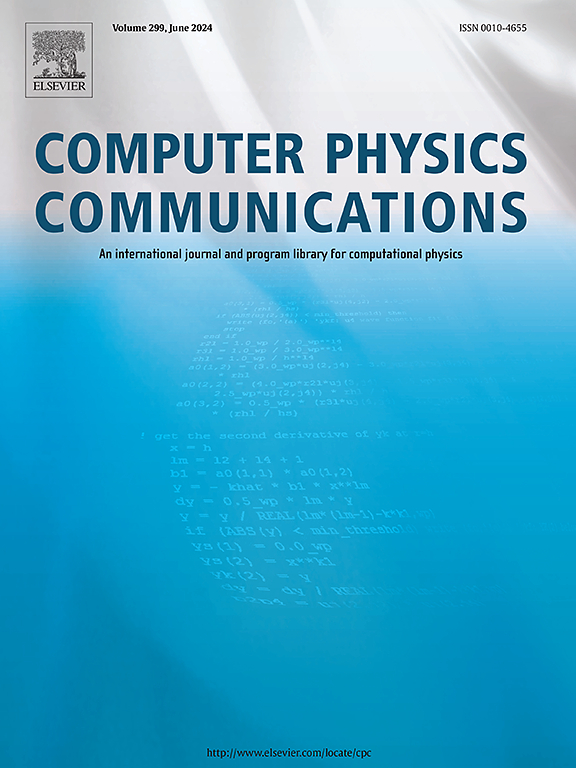Performance optimization of GJK collision detection in discrete element simulations
IF 3.4
2区 物理与天体物理
Q1 COMPUTER SCIENCE, INTERDISCIPLINARY APPLICATIONS
引用次数: 0
Abstract
This paper presents a comprehensive performance analysis of the Gilbert-Johnson-Keerthi (GJK) algorithm and its variants in the context of Discrete Element Method (DEM) simulations. Various optimization techniques, including bounding volumes, different distance sub-algorithms, Nesterov acceleration, and temporal coherence are investigated to evaluate their impact on computational efficiency for different particle shapes and aspect ratios. The study considers both static packing and rotating drum benchmarks, covering a wide range of particle geometries such as cubes, icosahedrons, cylinders, and superquadrics. Our findings indicate that the choice of bounding volume technique significantly affects performance, with oriented bounding cylinder outperforming oriented bounding boxes for elongated particles. Nesterov acceleration, although theoretically promising, generally shows limited performance improvements except for highly spherical particles. Temporal coherence, while beneficial for certain particle shapes and moderate aspect ratios, is less effective when particles are highly elongated or distant from each other. These results offer valuable insights for optimizing DEM simulations involving complex particle shapes and varying elongation levels.
离散元仿真中GJK碰撞检测的性能优化
本文在离散元法(DEM)仿真的背景下,对Gilbert-Johnson-Keerthi (GJK)算法及其变体进行了综合性能分析。研究了各种优化技术,包括边界体积、不同距离子算法、Nesterov加速和时间相干性,以评估它们对不同粒子形状和宽高比的计算效率的影响。该研究考虑了静态填料和旋转滚筒的基准,涵盖了广泛的颗粒几何形状,如立方体、二十面体、圆柱体和超二次体。我们的研究结果表明,边界体技术的选择对性能有显著影响,对于细长颗粒,定向边界柱的性能优于定向边界盒。涅斯特洛夫加速虽然在理论上很有希望,但除了高度球形的粒子外,通常表现出有限的性能改进。时间相干虽然对某些粒子形状和中等宽高比有利,但当粒子高度拉长或彼此距离较远时效果较差。这些结果为优化涉及复杂颗粒形状和不同伸长水平的DEM模拟提供了有价值的见解。
本文章由计算机程序翻译,如有差异,请以英文原文为准。
求助全文
约1分钟内获得全文
求助全文
来源期刊

Computer Physics Communications
物理-计算机:跨学科应用
CiteScore
12.10
自引率
3.20%
发文量
287
审稿时长
5.3 months
期刊介绍:
The focus of CPC is on contemporary computational methods and techniques and their implementation, the effectiveness of which will normally be evidenced by the author(s) within the context of a substantive problem in physics. Within this setting CPC publishes two types of paper.
Computer Programs in Physics (CPiP)
These papers describe significant computer programs to be archived in the CPC Program Library which is held in the Mendeley Data repository. The submitted software must be covered by an approved open source licence. Papers and associated computer programs that address a problem of contemporary interest in physics that cannot be solved by current software are particularly encouraged.
Computational Physics Papers (CP)
These are research papers in, but are not limited to, the following themes across computational physics and related disciplines.
mathematical and numerical methods and algorithms;
computational models including those associated with the design, control and analysis of experiments; and
algebraic computation.
Each will normally include software implementation and performance details. The software implementation should, ideally, be available via GitHub, Zenodo or an institutional repository.In addition, research papers on the impact of advanced computer architecture and special purpose computers on computing in the physical sciences and software topics related to, and of importance in, the physical sciences may be considered.
 求助内容:
求助内容: 应助结果提醒方式:
应助结果提醒方式:


